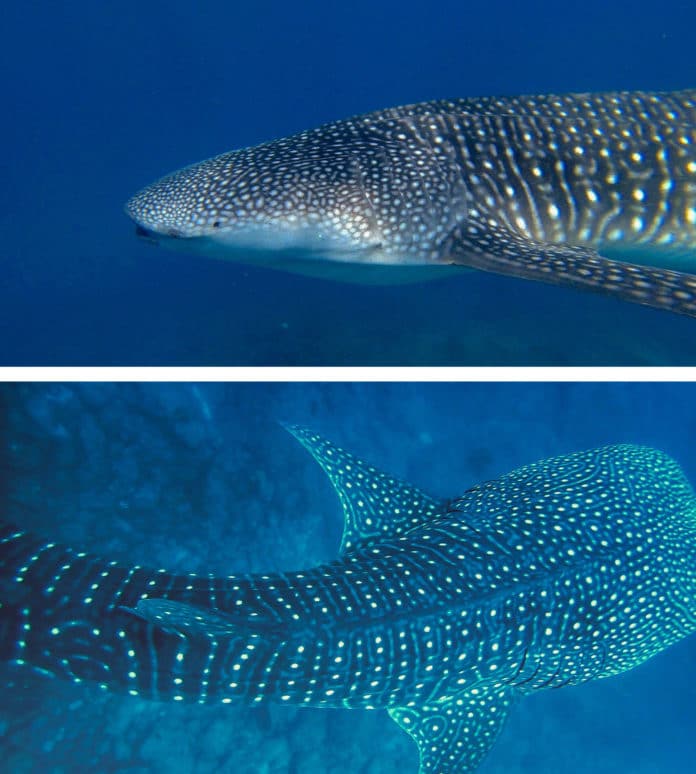Whale sharks (Rhincodon typus) are found circumglobally in tropical, subtropical, and warm temperate waters. Their known seasonal aggregations and migratory movements are influenced by factors such as ocean currents, thermobiological systems, and productivity patterns.
Several locations in the eastern tropical Pacific Ocean have known habitats for R. typus; Although it has long been known that whale sharks aggregate along the Panama coast, little is known in relation to their movement patterns, behavior, and habitat use.
By satellite-tracking, the whereabouts of 30 of them, scientists from the Smithsonian Tropical Research Institute (STRI), the Anderson Cabot Center for Ocean Life, and the University of Panama explored the factors influencing this endangered species’ behavior.
The satellite monitoring reveals that whale sharks feed in coastal waters, seamounts, and ridges of the Panamanian Pacific, where they can find an abundance of their favorite foods: small fish and plankton. They were also spotted swimming north and southbound along the coast, towards Mexico and Ecuador, and the open ocean to feed.
STRI marine ecologist Héctor Guzmán said, “This species requires clear regional planning. Once the feeding and breeding aggregation areas are identified, some protection measures should be implemented. The newly announced marine protected area expansions across the region provide an exciting platform for large-scale conservation practices.”
Although they used marine protected areas, the whale sharks also spent time in industrial fishing and vessel traffic zones, which could endanger them.
Catalina Gómez, co-author of the study and marine ecologist at the University of Panama, said, “The study shows how complex it is to protect whale sharks: tagged individuals visited 17 marine protected areas in 5 countries, but more than 77% of their time they were in areas without any protection.”
Therefore, conservation efforts for highly migratory and threatened species like the whale shark should go beyond the creation of regional marine protected zones.
Large oceanic areas should be protected, and efforts should be made to create marine corridors that cross international boundaries, like the recently expanded Cordillera de Coiba Marine Protected Area in Panama or the Marine Conservation Corridor of the Eastern Tropical Pacific, which links Coiba with Cocos Islands in Costa Rica, the Galapagos Islands in Ecuador, and Malpelo Island in Colombia.
Guzmán said, “A periodic tagging program should continue for two main reasons: first, we still don’t know where the species reproduces, and tracking may lead us in the right direction. Second, we know that they are moving across extensive areas. We have identified potential corridors or seaways and aggregation areas that require management attention and clear protection rules. Tracking will allow us to identify those regional routes better.”
The study also revealed a migratory whale shark pattern associated with circular ocean currents called eddies.
Guzman said, “Eddies are recognized as potential feeding areas for migratory species or food epicenters in the oceans, so they can swim in those areas for a long time while foraging and feeding. However, eddies are dynamic systems and constantly change in speed or strength, size, and location, even seasonally. These feeding areas are important for conservation, especially considering their dynamics and potential changes associated with climate change.”
Journal Reference:
- Hector M. Guzman, Caroline M. Collatos and Catalina G. Gomez. Movement, Behavior, and Habitat Use of Whale Sharks (Rhincodon typus) in the Tropical Eastern Pacific Ocean. DOI: 10.3389/fmars.2022.793248
